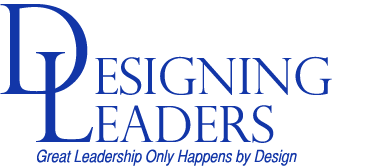The Key is Not the Plan…It’s the Planning
A well-developed business plan, with lots of PowerPoint slides, appendices, bibliographies, all wrapped up in a nice shiny binder, is a great thing. For example, it makes a great doorstop. It can be used to prop up the corner of a crooked desk. It makes a helpful place to set your coffee. One thing is does not provide, though, is a guarantee of success.
Does that mean you should not bother with a plan? Of course not! A good plan, whether for your long-term business, your management in the office, or a who-would-have-guessed-it contingency, is a useful thing to have. It provides a starting point…sure, things will change, but it helps to have something to change from, rather than just standing around slack-jawed waiting for someone to come up with an idea when the world starts to change around you.
The real benefit, though, is not just in the plan…it is in the planning.
A good planning process starts with questions. What is the world around me like? What resources do I have? What do I want to accomplish? What are my obstacles and opportunities? How do I get from Point A to Point B? Do I even want to be at Point B? These questions help you define your world and determine not only how to make it look like you want, but what you want it to look like in the first place.
Once you start answering these questions, the impossible (or at least, the improbable) often becomes possible. You start to see what is important and what is not, you see new avenues open up, you consider connections and networks that were not obvious before. You may find that where you really want to be is far different from what you originally thought. Or, maybe it is the same. The thing is, you won’t know until you ask…and start answering.
It is not enough to just dream about what could be…a good planning effort forces you to be realistic, but also helps you redefine “realistic.” The simple act of putting things down on paper forces you to really think, to debate ideas, to divide up your resources and match them to your goals. In short, it gets you away from talking about all those things you should be doing and moves you in the direction of doing them.
This last point is critical. “Talk talk talk” does no good if not followed by “act act act.” Many leaders like to explore new possibilities, consider what we could do “if…,” and talk long into the night about great opportunities. A popular ad campaign in the 1980s said, “At Hewlitt-Packard, we never stop asking ‘what if?,'” but some follow-on action is necessary to turn “what if?” into something real.
So as you harness your creative power, you need to focus it in a positive direction. Move beyond questions to answers. Identify what you really want to do, find the best way to do it, and move out. And when the world changes and you need to create a new plan, at least you know how to do it.
- Posted by
 Designing Leaders
Designing Leaders - Posted in Planning
 Oct, 17, 2014
Oct, 17, 2014 Comments Off on The Key is Not the Plan…It’s the Planning
Comments Off on The Key is Not the Plan…It’s the Planning
Categories
- Book Reviews
- Change
- Communication
- COVID-19
- Creativity & Innovation
- Culture
- Diversity & Inclusion
- Employee Development
- Ethics
- Free Agents
- Health and Balance
- Leader Development
- Leading
- Management
- New Leaders
- Planning
- Recruiting and Retention
- Uncategorized
Archives
- August 2020
- July 2020
- June 2020
- October 2019
- September 2019
- August 2019
- July 2019
- June 2019
- May 2019
- March 2019
- February 2019
- January 2019
- December 2018
- November 2018
- October 2018
- September 2018
- August 2018
- July 2018
- June 2018
- May 2018
- April 2018
- March 2018
- February 2018
- January 2018
- December 2017
- November 2017
- October 2017
- September 2017
- August 2017
- July 2017
- June 2017
- May 2017
- April 2017
- March 2017
- February 2017
- January 2017
- December 2016
- November 2016
- October 2016
- September 2016
- August 2016
- July 2016
- June 2016
- May 2016
- April 2016
- March 2016
- February 2016
- January 2016
- December 2015
- November 2015
- October 2015
- September 2015
- August 2015
- July 2015
- June 2015
- May 2015
- April 2015
- March 2015
- February 2015
- January 2015
- December 2014
- November 2014
- October 2014


 Oct, 17, 2014
Oct, 17, 2014